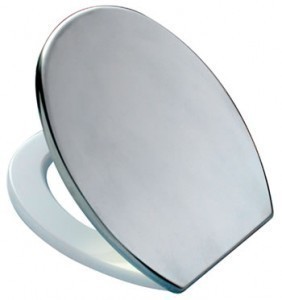Toilet Seat Dimensions
The toilet seat is a very important part of the bathroom. Its basic components are the lid and the seat. It is connected to the toilet bowl, where people can sit conveniently while answering the call of nature. Sometimes, people use it while waiting for their feet to dry. In other cases, it is a very nice place to sit while cutting toenails. Aside from all its important uses, it is good to learn more about the different toilet seat dimensions.
It is connected to the toilet bowl, where people can sit conveniently while answering the call of nature. Sometimes, people use it while waiting for their feet to dry. In other cases, it is a very nice place to sit while cutting toenails. Aside from all its important uses, it is good to learn more about the different toilet seat dimensions.
Dimensions of a Toilet Seat
Based on records, the measurement of a standard toilet seat is 360 millimeters wide and 430 millimeters long. Although seats under this type of category are available in different styles and variations, they still follow the same basic measurement. Molded wood, plastic as well as porcelain are some of the materials that are used to create this important bathroom fixture. Likewise, some manufacturers consider ivory and steel for the same kind of purpose. Aside from the standard toilet seat, there are also other variations. Some of these seats even have lengths of up to 756 millimeters, while others are somewhere close to that measurement.
Additional Facts and Other Interesting Details
Toilet seats come in varying styles and designs. More often than not, the design of a particular seat depends on the shape as well as the style of the toilet bowl. There are two main types of seats, one of which is for the regular bowl while the other one is for the elongated variant. Furthermore, seats are manufactured using different colors, some of the most popular of which are black, maroon and white. Inside most prisons and jails, the seats are built-in, which limit the possibility of prisoners turning them into escape tools or deadly weapons.
In North America, the use of toilet seats is very much common, particularly in public washrooms. The purpose of this is for better sanitation. At the front center of the seat, there is an opening or gap, which serves the purpose of minimizing spatter. In addition, it also facilitates the actual cleaning process.
During the early parts of the 20th century, toilet seats were mostly colored black. After that, many people wanted to give them brighter appearance. For this reason, a majority of manufacturers decided to produce white-colored seats. In some place in the United States, the use of black seats is prohibited, such as the case in Florida and Maryland. However, some places still allow its use, which is true for other U.S. states like Pennsylvania. The same thing is in effect in Canada, which is one of the many other places that still allow the use of black toilet seats in public washrooms.





